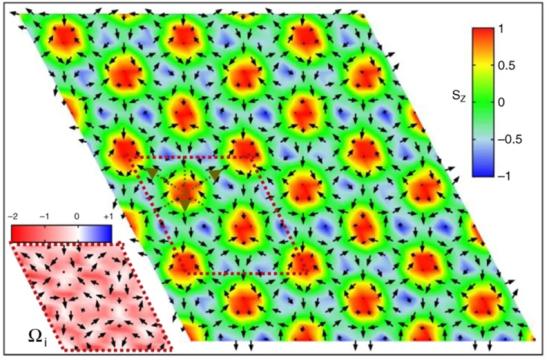MOdeling and DEsign of functional Materials (MODEM)

Our group is dedicated to the modelling and design of innovative quantum materials that exhibit promising functionalities (i.e. magnetism, ferroelectricity, multiferroicity, coupled spin/charge/orbital/lattice degrees of freedom), of interest for next-generation low-power spintronic devices.
At the heart of our research lies the use of first-principles simulations within density functional theory, enabling us to delve deeply into the structural, electronic, ferroelectric and magnetic properties of these materials. Complementing these ab-initio investigations, we frequently employ model Hamiltonian approaches and rigorous symmetry analysis to enrich and broaden our understanding.
Our main current focus is modelling two-dimensional magnets (i.e. NiI2, CrI3, CrGeTe3), atomically-thin layers that exhibit long-range magnetism and spin-orbit-induced phenomena. Another key area of interest lies in oxide-based perovskites, including manganites, particularly those characterized by a strong coupling between spin and dipolar degrees of freedom, leading to phenomena such as multiferroicity and magnetoelectricity.
We study the microscopic origin of complex spin textures (i.e. non-collinear, non-coplanar, helical, skyrmions, etc) and the possible coexistence of magnetic order with exotic phenomena, such as ferroelectricity, charge-order, k-dependent spin-splitting in the electronic structure of the compounds of interest.
The coexistence of multiple orders enhances the multifunctional capabilities of materials, enabling, for instance, the manipulation of spin degrees of freedom through the application of an electric field, one of the grand-challenges in spintronics.
Gruppo di ricerca
Prof. Silvia Picozzi